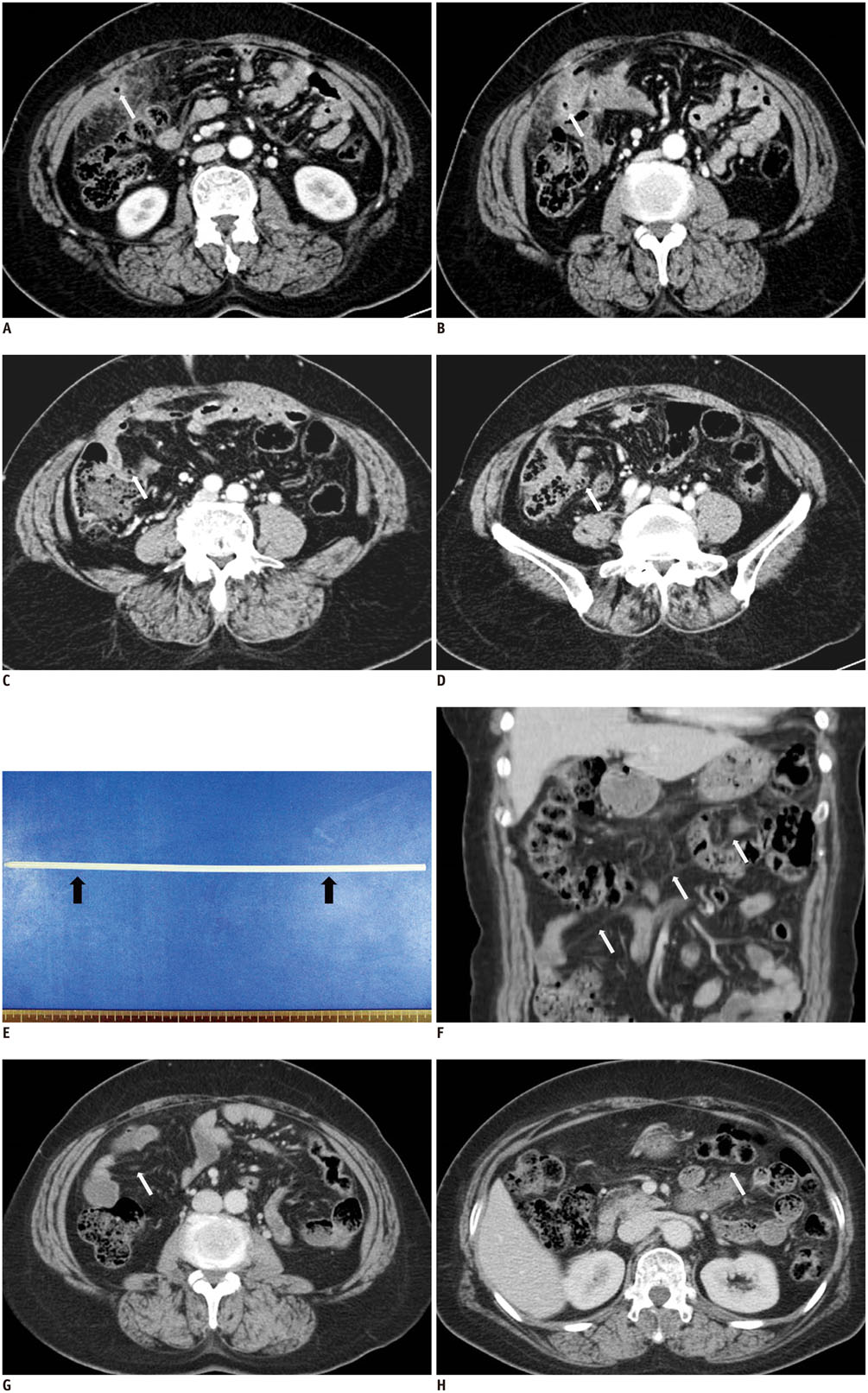Korean J Radiol.
2016 Aug;17(4):541-544. 10.3348/kjr.2016.17.4.541.
CT Findings of Foreign Body Reaction to a Retained Endoloop Ligature Plastic Tube Mimicking Acute Appendicitis: A Case Report
- Affiliations
-
- 1Department of Radiology, Asan Foundation, GangNeung Asan Hospital, University of Ulsan College of Medicine, Gangneung 25440, Korea. jhahn@gnah.co.kr
- KMID: 2455424
- DOI: http://doi.org/10.3348/kjr.2016.17.4.541
Abstract
- Many hospitals experience one or more retained surgical instrument events with risk of patient morbidity and medicolegal problems. Identification of retained surgical instrument is important. The radiologists should be familiar with imaging finding of retained surgical instrument. In a 62-year-old female with a retained plastic tube, localized peritoneal infiltration around air-containing tubular structure mimicked acute appendicitis on abdomen computed tomography (CT), one year after laparoscopic cholecystectomy. We reported CT findings of foreign body reaction related to retained Endoloop ligature plastic tube mimicking acute appendicitis.
MeSH Terms
Figure
Reference
-
1. Gawande AA, Studdert DM, Orav EJ, Brennan TA, Zinner MJ. Risk factors for retained instruments and sponges after surgery. N Engl J Med. 2003; 348:229–235.2. Kaiser CW, Friedman S, Spurling KP, Slowick T, Kaiser HA. The retained surgical sponge. Ann Surg. 1996; 224:79–84.3. Kalovidouris A, Kehagias D, Moulopoulos L, Gouliamos A, Pentea S, Vlahos L. Abdominal retained surgical sponges: CT appearance. Eur Radiol. 1999; 9:1407–1410.4. Enker WE, Martz JE, Picon A, Wexner SD, Fleshman JW Jr, Koulos J, et al. An incremental step in patient safety: reducing the risks of retained foreign bodies by the use of an integrated laparotomy pad/retractor. Surg Innov. 2008; 15:203–207.5. Choi BI, Kim SH, Yu ES, Chung HS, Han MC, Kim CW. Retained surgical sponge: diagnosis with CT and sonography. AJR Am J Roentgenol. 1988; 150:1047–1050.6. Porter KK, Bailey PD, Woods R, Scott WW Jr, Johnson PT. Retained surgical item identification on imaging studies: a training module for radiology residents. Int J Comput Assist Radiol Surg. 2015; 10:1803–1809.
- Full Text Links
- Actions
-
Cited
- CITED
-
- Close
- Share
- Similar articles
-
- Perihepatic Foreign Body Abscess mimicking a Ruptured Hepatic Tumor: A Case Report
- Noninfectious Endophthalmitis Caused by an Intraocular Foreign Body Retained for 16 Years
- An Unrecognized Foreign Body Retained in the Calcaneus: A Case Report
- Down the Rabbit Hole-Considerations for Ingested Foreign Bodies
- Case Report of Retained Intraorbital Metallic Foreign Body Removal


